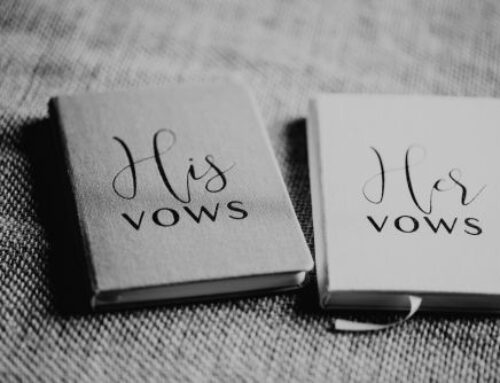You’re a sensitive person, walking through your day with invisible armor to protect yourself from the intensity, insensitivity, or abrasiveness of others. You’ve found a way to make it work, but at a cost. Your way is avoidance and the cost is your authenticity and joy.
When your boss gives you that look, you step back and hunch your shoulders forward in preparation for the requisite admission of guilt that will deescalate him. When your partner uses that tone of voice, you know it’s time to change the subject and forget about trying to be understood.
In an argument, the words never come out right. You’re prone to emotional outbursts or bouts of situational depression. Little by little, day by day, your defenses have left you disconnected from your true feelings and unable to find your own voice. If this is you, I get it, this was me too until I let the horse teach me a new way of addressing conflict.
Today, I am an equine guided life coach. I facilitate experiential learning for humans with horses, letting the horse guide the human toward a more balanced, authentic, and joyful state of being. What the horse has taught me and my clients about addressing conflict has changed my life forever.
Let’s start with a story.
One day a client, we’ll call her Cynthia, arrived for a session. She was late, holding a hot coffee in one hand and wearing no protection against the harsh midday sun. She seemed hurried and scattered. As she approached the round pen, Chi, the bay gelding I had selected to work with her, hung his head over the gate and seemed anxious to leave us. Cynthia patted his nose and told him he was handsome.
We entered the pen and Cynthia launched into her life situation. As she spoke, the gelding paced around the outside of the pen as if to say, “I feel anxious and tense, I have to move my body.” He was a perfect reflection of Cynthia’s inner state of being.
Cynthia continued to share her feelings, thoughts, and beliefs, while another horse, Nasim, approached the round pen and stuck his nose over the fence to greet Chi. The two sniffed in their usual manner, but as Cynthia’s story began to veer toward the conflict she felt between her feelings of suffocation and sincere connection with her spiritual community, the two horses began to argue.
Chi and Nasim relentlessly nipped at each other over the rail as Cynthia spoke. For a moment, it seemed to de-escalate as Nasim left Chi and approached the round pen gate in an obvious request to enter. I knew it was risky, Cynthia was caught in her inner conflict and the two geldings were already showing aggression. But, if there is one thing the horses have taught me, (which they certainly have taught more than one thing!) it is to trust them.
I let Nasim into the pen and kept a vigilant watch on Cynthia as we continued exploring her feelings around this issue. The two geldings heightened their conflict in perfect reflection of Cynthia’s feelings.
I managed her safety and helped her notice the subtle shifts in the horses as her feelings and beliefs ebbed and flowed. I guided her to move her body, explore the questions that were rising in her, and deepen her awareness. Soon enough she recognized the conflict within herself, the underlying beliefs that were at war, and which of them she was ready to let go of. The horses continued to annoy each other at a lower level, but I knew Cynthia had a breakthrough when Chi decided to yield to Nasim and leave the round pen. The remainder of the session was a series of explorations and experiences of Cynthia’s new way of being.
After guiding so many clients through conflicts, whether within themselves or in relationship with others, I’ve learned to distill the wisdom of the horse down to four key steps that help us move from conflict back into harmony.
Step One: Awareness
The first essential step toward addressing conflict in a healthy way is to bring your awareness into the equation. Notice that you are in a conflict. Consider the underlying needs that you and the other person, or the opposing part of your own self, are trying to meet. The simple act of stepping into the role of observer can help to de-escalate and depersonalize a conflict enough to gain greater understanding and, most importantly, find compassion for yourself and others.
Step Two: Take Responsibility
Once fully aware of the situation, it’s time to own your part. This does not mean that you must presume that conflicts are all your fault. What this means is that you take responsibility for how you show up in the conflict. Are you living in your values? Are you speaking from an open heart? Are you willing to listen? Do you believe there is only one right answer? Are you drawing healthy boundaries? Are you trying to prevent, avoid, or control another? This is hard work, but if we can do this well, we can move through conflict with such integrity that it will be easy to let it go once resolution is found.
Step Three: Communicate with Clarity
Horses communicate with such clarity that once you know their language, you’ll be astounded to realize how easy it is to understand them. Humans, well, we can be a bit more complicated. Horses show us how to communicate with intention and energy. These more subtle forms of non-verbal communication are far more powerful than words alone. Through this practice, we learn to communicate in conflict with such clarity that we can feel good about what we said. And when we feel that alignment with our true self, conflict becomes so much easier to release.
Step Four: Let It Go
As I’ve already alluded, letting it go is the goal. We want to live in harmony, not in conflict. But, conflict avoidance is not the solution. The answer is to follow these steps. If you do, if you truly 1) become aware of the underlying needs, 2) take responsibility for how you show up, and 3) communicate with clarity, letting go becomes so much easier. It is the doubts and regrets that creep up when we experience conflict from an unconscious place, respond from behavior patterns learned through trauma of our past, and communicate in a muddle of emotions that letting go becomes a herculean task.
Ready to dive into this work? Come to our July retreat, we have room for 5 more participants!
[embedyt] https://www.youtube.com/watch?v=2wx8adq5YF8[/embedyt]





Leave A Comment